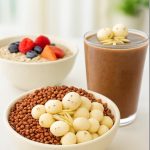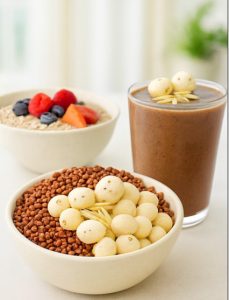
What did you do to get Relief from your Body Pain ?
“That is the thing about pain, it demands to be felt”
People suffer from various types of pains – neck, migraines, shoulder, knee, elbow, various chronic pains and then there is fibromyalgia. Many of these pains are related to stress that we go through in our mind. Recent report by Partners in Pain reveals that half of 44 million household in America suffers from chronic pain. This applies to other parts of the world too. In India and European countries, the number of population who are suffering from chronic pain is increasing. Surprisingly majority of the younger generation between the age group 25-35 are also reported to suffer from chronic pain. People who are shaping up their career and family life are undergoing through lot of stress and are developing these pain symptoms. People are willing to live with pain due to increase in healthcare and medicine cost and by sick of taking those OTC painkillers -many are moving away from the conventional pain control medications and are embracing holistic and natural ways to reduce pain.
According to Ayurveda whenever the energy (prana) flow in the body gets disturbed we experience pain (it same as disturbance in blood flow and lymph). Pain can be caused by vata, pitta and kapha – that is, spasm, inflammation and congestion. Vata or congestion is involved in all pain. It is important to take care of this dosha.
How to manage pain?
Eat well and be well : Watch what you eat especially when one need to balance vata. Vata is cool, dry, rough and light, so eating foods that neutralize these qualities – foods that are warm, moist, oily, smooth, and nourishing – can help to balance excess vata. Vata balancing foods are soft, mushy in nature and contains protein and fat. Eat warm and hot food that helps muscle to relax. When fat is taken in a moderate way, it lubricates the organs. It is important to keep moisture and warmth of the body to relieve the muscle pain. What food to eat? See below:
- Drink plenty of warm or hot fluids. Do not drink fluids that are below room temperature.
- Eat moist foods like berries, melons, summer squash, zucchini, and curd to offset vata’s dry quality. Drink various soup varieties
- Oily foods like avocado, coconut, olives, buttermilk, cheese, ghee, whole milk, wheat, nuts and seeds are good too.
- Avoid exceptionally drying foods like popcorn, crackers, white potatoes, beans, and dried fruits.
- Eat moderate amount of sweets because sweet taste is the foundation of a vata pacifying diet. It is the predominant taste in most of vata’s staple foods.
Relaxation & Sleep well: It is important to relax the mind and then the body when you are undergoing pain.
- Take a 10 minutes nap: Practice it. If you are at work, take a small break during lunchtime. If you are home, take a afternoon nap for 20-30 minutes. Let the body recover as mind relaxes.
- Practice shavasana (corpse pose) : This practice can reduce muscle spasms, relieves tension and relaxes the aching parts of the body.
- Soft music & reading: Take time to listen to some soft music of your choice. Read book that sheds positivity in your mind.
- Go to bed early: Sleep is the best medication – make sure to go to bed early and sleep well (see how to get good sleep article People who have chronic pain need 7-8 hours sleep every day.
Aromatherapy: Use essential oils to reduce your stress. Try these oils as diffusers, in hot bath or for massaging purposes. Make sure to test it before applying on your skin.
- Rosemary and thyme oil known to increase the blood flow by creating warmth in the body.
- Chamomile oil is helps to relieve muscle pain and spasms, low back pain, headaches and pain caused by PMS.
- Sweet marjoram oil has sedative properties. It helps to relieve muscle pain and spasms, stiffness, rheumatism, osteoarthritis and migraine.
- Lavender oil is probably the most famous essential oil for pain relief and relaxation. It has anti-inflammatory, anti-microbial and sedative properties and it helps to relieve muscle tension and spasms, joint pain and headache.
- Eucalyptus oil has analgesic and anti-inflammatory properties. This oil is good for muscle pain and nerve pain.
- Peppermint oil is good for muscle and joint pain, headache and nerve pain.
Massage: Massage experts estimate that high percent of diseases and conditions are stress-related. In addition, perhaps nothing ages us faster, internally and externally, than high stress. Massage is an effective tool for managing this stress, which helps our mind to: Decrease the anxiety, enhance sleep quality, to get greater energy, to improve concentration and to increase energy circulation by reducing fatigue.
Read further: https://healthylife.werindia.com/body-and-mind/massaging-can-help-body-mind
Yogasana: Pain can stop anyone from stretching and exercising. But, many people does not know that by stretching the muscle one can remove the body pain. By restricting ourselves or by withholding ourselves from stretching we will commit injustice to our body. Because by being stagnant all the toxins in the body retains inside. If we exercise then by sweating we remove toxins or by doing simple yogasana we can contract and relax our muscles so that there will be an easy flow of various fluids in the body -blood, lymph and synovial fluid. Stretching for 15-20 minutes helps throughout the day.
Some of the asanas one can practice for chronic pain
- Surya namaskar (See:https://healthylife.werindia.com/your-road-to-healthy-life/practice-surya-namaskara-makara-sankranti-day)
- Child pose
- Corpse pose with chair
- Bridge pose
- Angle pose
- Forward and backward bend poses
- Leg strech poses – triangle, warrior 1 & 2 poses
It is very important to understand the problem of the body and the source of pain. Before the pain overtakes and puts you down – find it and try to relieve it. This helps you to be positive, energetic and happy and keep focused in life.
References:
- www.yogajournal.com
- www.ogainternational.com
- www.greenyatra.com
- Healthylife.werindia.com
- Image credit: <a href=’https://www.freepik.com/free-photos-vectors/background’>Background photo created by freepik – www.freepik.com</a>
Author: Sumana Rao | Posted on: January 20, 2016
« Benefits of being nice to others How are you Dealing with a Moody Person »




















Write a comment